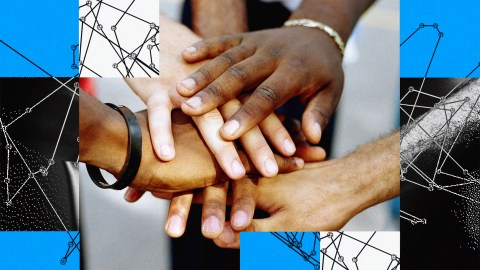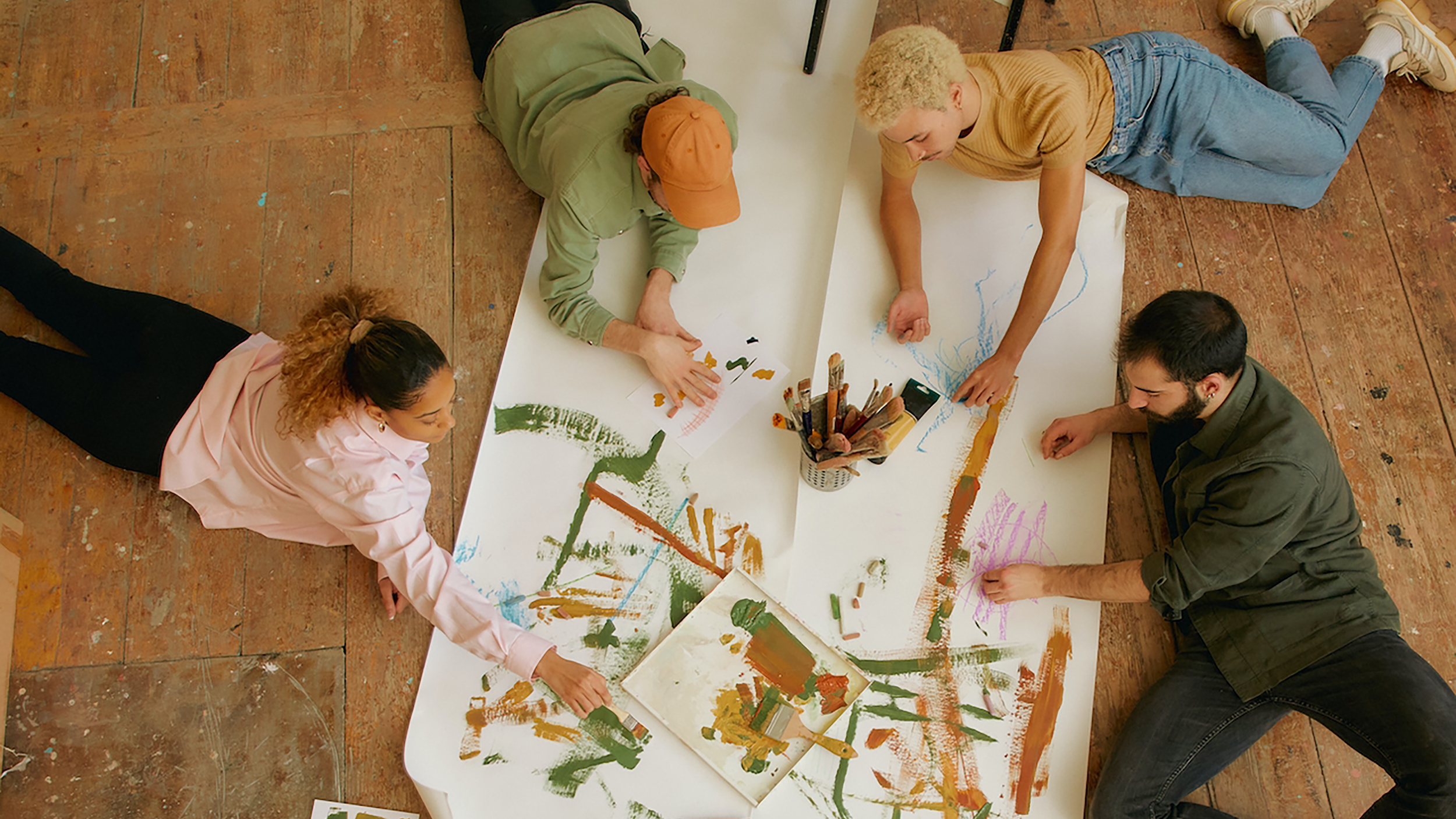Want to build trust in your workplace? Here’s a toolkit

- All great ideas require trade-offs — and the process of fitting together every evolving element requires a kind of magic or “enchantment.”
- A culture of trust must be established in any organization for enchantment to emerge naturally.
- Integration and diversity are two of the key pillars supporting a culture of trust.
One day Steve Jobs was asked to describe what he found most important in the development of a product. His response is worth reading in full:
“You know, one of the things that really hurt Apple was that after I left, John Scully got a very serious disease. And that disease, I’ve seen other people get it too: it’s the disease of thinking that a really great idea is 90% of the work.
“And that if you just tell all these other people, you know, here’s this great idea, then of course they can go off and make it happen. And the problem with that is that there is a tremendous amount of craftsmanship in between a great idea and a great product. And as you evolve that great idea, it changes and grows, it never comes out like it starts, because you learn a lot more as you get into the subtleties of it and you also find that there’s tremendous trade-offs that you have to make.
“There are just certain things you can’t make electrons do, there are certain things you can’t make plastic do, or glass do, or factories do, or robots do. And as you get into all these things, designing a product is keeping five thousand things in your brain, these concepts, and fitting them all together and kind of continuing to push and put them together in new and different ways to get what you want.
“And everyday you discover something new: that it is a new problem or new opportunity to fit these things together a little differently and it’s that process that is the magic.”
This insight is so profoundly true, and I like calling that process “enchantment.” In fact, that’s the reason why I named my company Theory of Enchantment in the first place, because our company’s goal is to help other businesses build ecosystems of trust and belonging so that that magical process Steve spoke about will be more likely to naturally emerge.

But this process will be impossible to activate if there’s deep mistrust between and within departments in a business. Whether that distrust is between managers and C-suite executives, board members and executive leadership teams, or between employees and customers, this process of enchantment gets stymied because folks do not know how to build a culture of trust. In some cases, they barely know their colleagues, having only interacted with them on Zoom once a month with maybe one or two offsites (if that) in between.
Add to the mix large, people-focused sectors like hospitals, schools, and childcare centers. If employees in these institutions do not trust each other they will not be able to provide the services necessary to treat and provide for those in their care.
Just as great craftsmanship is required to develop products, great craftsmanship is required to cultivate a community that can then go on to develop those products in the first place. How might we cultivate this? Here’s where Theory of Enchantment’s ecology of principles and practices come in. Below are two that any organization would do well to adopt as a matter of policy.
Integration
In the United States, we often think of integration as a racially-specific word concerning the desegregation of schools and businesses and the passage of legislation that put an end to Jim Crow laws in the South.
But integration as a philosophy encompasses far more than this. It is related to the word “integrity.” The dictionary defines integrity as “the state of being whole and undivided.” This is a crucial aim at Theory of Enchantment. We equip business leaders with an ecology of practices so that they act from a place of wholeness.
Wholeness is a state of being where business leaders practice being in a healthy relationship with the full acceptance of their own complexity, their insecurities and their talents, their baggage and their unique gifts, so that when faced with scarcity and suffering — which are inevitable aspects of the human experience — they solve for it together, holistically, and responsibly, instead of projecting the things they don’t like about themselves onto their colleagues as a way to discharge pain.
Let’s say an angry customer yells at you when trying to get you to fulfill their request. If you have not been trained, you will likely take what that customer is saying super-personally. You will not realize that the person in front of you is experiencing a pain point and that they are trying to discharge that pain by yelling at you. So naturally, in response to their anger, you will become angry back and respond with dismissiveness at best, and condescension at worst. Meanwhile you’ve made a customer who was already feeling bad feel worse and you’ve likely lost them forever.
The dictionary defines integrity as “the state of being whole and undivided.” This is a crucial aim at Theory of Enchantment. We equip business leaders with an ecology of practices so that they act from a place of wholeness.
For managers who are coached in the Theory of Enchantment, this is not very likely to happen. They practice several wisdom traditions including stoicism and nonviolent communication. And these practices help them to a) recognize when pain is rising in them, b) breathe through that pain, c) recognize when pain is rising within the customer, and d) respond directly to the pain — not to the discharging of the pain (aka the yelling).
This way of responding requires I be attuned to the subtleties of my own being so that I can pick up on what’s happening to the person in front of me. At Theory of Enchantment, we’ve received direct feedback from managers, employees, and staff across multiple industries that this is how they’ve responded while being coached in the Theory of Enchantment online course: When confronted with irate customers they respond by defusing the anger and those customers, in turn, calm down, and are actually delightfully surprised to be met in this way. (And in some cases customers apologize for reacting the way they did in the first place.) This is what it means to show up at work and build an integrated culture.
Diversity
One of the chief sustaining conditions of a healthy ecosystem is diversity. As Yale political scientist professor James Scott put it, “monocultures are, as a rule, more fragile and hence more vulnerable to the stress of disease and weather than polycultures are.”
This is true both in a natural habitat and in a business environment. If you want to build lasting products and services that surprise and delight your customers, you must survey and continuously test your products and services in the diverse environments in which your customers live. This will ensure your products and services are flexible, durable, adaptive, and able to withstand the test of time.
To do this, you must attract, employ, and retain a diverse pool of workers who think and see differently. When I write of diversity, I do not mean a race-based quota system. I mean welcome colleagues who come from varied ways of thinking, seeing, and being. It is out of this diversity that a synthesis can emerge, making for a robust creation process. This may sound obvious but it’s actually hard to do.
I’m a very “big ideas” person with poetic sensibilities. My business partner Peter is very structured and data-driven. At times when we first started working together I found his way of seeing the world super-threatening. “What do you mean we need to prove this is working by capturing and tracking data? Why can’t we just put ourselves out there?” This may sound inane but there’s part of my art brain that truly feels this way. But over time I learned to see the beauty and elegance of Peter’s way of thinking, how his structured, disciplined approach makes our products better, stronger, and cooler. And it is tension between our two ways of thinking that actually creates magic and makes better products.
When I write of diversity, I do not mean a race-based quota system. I mean welcome colleagues who come from varied ways of thinking, seeing, and being. It is out of this diversity that a synthesis can emerge, making for a robust creation process.
But I would not have been able to come to this conclusion had I not been training in the Theory of Enchantment which has made me far less threatened by different ways of thinking in the first place — by giving me practices that help me get in a healthy relationship with discomfort and pain which are all part of life. In this way the teachings are very meta. I am a student of it as much as I am a teacher.
There are so many other first principles and practices we teach at Theory of Enchantment but I’ll leave you with these two as food for thought. As you think about how to build a company or make your existing company perform even better, I hope you’ll think about what I have written. Adopting these perspectives will help you not only fall in love with the process that Steve Jobs so eloquently described; it will help you see how that same process is already alive and unfolding within you. It will help you see that this is what it means to be human and what it means to be fully alive — and it will help you build great things.
Theory of Enchantment has released an app called DOJO! where users can complete daily 3-min quests that will transform them into more compassionate, open-hearted, human beings. If you’re interested, subscribe here. If you would like us to train your employees, join the waitlist for our newest and most exciting program, the Enchanted Games League (EGL) here.





